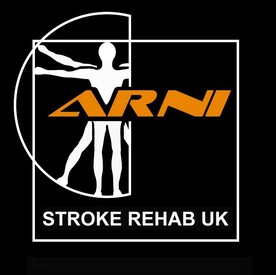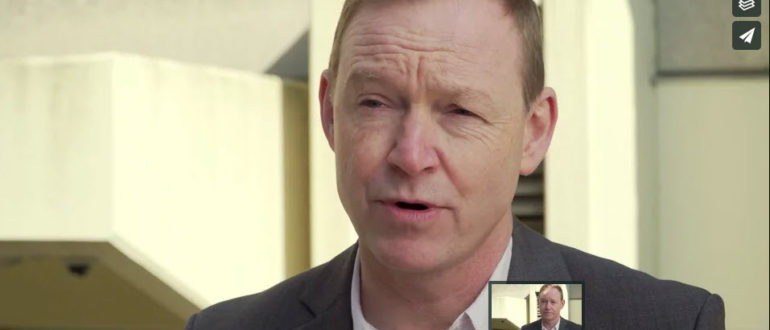Upper limb impairment affects most patients at the time of the stroke, with persisting problems for between a half and three quarters of survivors. This can be partly explained by where the injury is in the cortex. But because regaining lost function in the upper extremities has been found to be more difficult to achieve than return of normal function in the lower extremities, only 14% of these will regain any useful function. Between 55% and 75% continue to experience upper extremity functional limitations.
Professor Nick Ward (who has kindly taught my ARNI instructor groups at UCL for around 10 years now) runs the UK’s first and to date only dedicated (and outstanding) Upper Limb Service at Queen Square. He states that upper limb recovery after stroke is unacceptably poor – and gives some stats:
- 60% of patients with non-functional arms 1 week post-stroke didn’t recover
(Wade et al, 1983)
- 18 months post-stroke 55% of patients had limited or no dextrous function
(Welmer et al, 2008)
- 4 years post-stroke only 50% had fair to good function
(Broeks et al, 1999)
If you’re a stroke survivor, you know already that regaining upper body function is a very different task to rehabilitating the lower body. Nevertheless, the two ‘halves’ of the body are not so different after stroke. New evidence says that both the upper and lower limb are as weak as each other after-stroke, which suggests that the poorer recovery of the arm, so frequently seen in stroke patients, may not be an inevitable consequence of the stroke.
An excellent research paper by Professor Sarah Tyson and colleagues in 2006 called ‘Distribution of weakness in the upper and lower limbs post-stroke’ advises that the effectiveness and intensity of rehabilitation interventions should be considered. This may well be so: the majority of stroke survivors whom I’ve met, when describing their prior physiotherapy and any other rehabilitative efforts, will report that the focus of consistent therapy was usually on the lower limb and walking practice. A minority remembered consistently focusing on practising upper limb exercises.
This happens for a number of reasons, but primarily because it is critical to get stroke survivors walking, and also essential to keep spirits up with the recognition of progress, which probably is facilitated better by the thought of being able to walk again. So hospitals often do not have time to devote to extensive hand-function efforts, and by the time further treatment is sought, the task is all the more harder.
The evidence states clearly that initial degree of motor impairment is the best predictor of motor recovery following a stroke. So, functional recovery goals are appropriate for those patients who are expected to achieve a greater amount of motor recovery in the arm and hand. But the evidence also shows that compensatory treatment goals should be pursued if there is an expected outcome of poor motor recovery. We are even uncertain whether task-specific repetitive training improves upper extremity motor function.
It is vital that stroke survivors are shown, in clinic, ways to either train for progressive functionality or physical self-management techniques or/and both. Rather than leaving people to try and work it out for themselves once they reach the community.
Those with more potential can be shown how to radically ramp up the dose of repetitions performed with upper limb during the day, perhaps incorporating modified constraint induced movement therapy (a beneficial treatment approach which can be done at home, for those stroke patients with some active wrist and hand movement). Professor Nick Ward told me that Professor Gert Kwakkel and colleagues noted way back in 2003 that those showing some synergistic movement in the upper limb within 4 weeks after stroke have 90% chance of improving.
We interviewed Professor Nick Ward to find out more about his views about what both therapists and stroke survivors can potentially do to improve upper limb outcomes after stroke:




8 Comments
Dear Tom, I brought my daughters carers and physio to your conference in November It really motivated us all and we came away more determined that my daughter Zarah who had an aneurysm in 2012 could recover much more .
The hospital prognosis was no treatment or therapy would work but determined she has had physio and SLT privately since leaving hospital in 2013 . Her core strength is getting stronger, her alertness is wonderful and she can follow commands in her own time which makes the cares job a lot easier.
We were told this wouldn’t happen
Her physios are very keen to get B (the anti-spasticity injection) in her right foot but we have been refused by the NHS. A foot consultant would like to give her a chance rather than surgery; could you recommend anyone in UK?
I want to give her the best chance possible to become weigh bearing as I have been advised it is the best possible chance for Zarah to have good health now and in the future.
If it doesn’t work, we have tried.
Sincerely Patricia Hunt
Dear Patricia
I am sorry to hear of your difficulties obtaining B (the anti-spasticity) treatment. as an upper limb surgeon I have run an upper limb spasticity clinic in conjunction with a paediatric surgical colleague ay RJAH Orthopaedic Hospital (Oswestry) for about 8 years although 2/3 of our patients have cerebral palsy rather than acquired brain injury we frequently use B (the anti-spasticity injection) for upper and lower limbs without funding issues (although it will be at the discretion of your CCG). I also, more recently have established NHS upper limb spasticity clinics based at rehabilitation centres in Stoke on Trent and Wolverhampton. We would be happy to see you with a referral from your GP or therapy team
Think more attention should be paid to upper limb recovery straight after stroke
It is seriously difficult to manage with one arm more attention should be paid to enable re use in early stages to give more self confidence. And independence.
I’m interested in this upper limb research.
I experienced my Stroke on June 13th 2017, thankfully i volunteered for a research programme (EVERLAP) which dealt specifically Augmented Physiotherapy for Upper limbs, i was lucky enough to be part of one the groups that provided additional Physiotherapy over a period of 12 or so weeks.
In my opinion without this additional assistance i would not have had the recovery i have to date (i’m sitting typing using both sets of fingers), six months ago i couldn’t move any fingers on my right hand with any real purpose.
I totally agree that additional help is needed to help the upper limb recover.
Hi I suffered a quite severe stroke 6 years ago which kept me in hospital for 4 weeks. I had great difficulty walking and my left arm and hand would not respond and were motionless. I could just about walk on leaving hospital with a walking stick .
Previous to the stroke I had been fit but had a very stressful life and probably drank too much red wine.
Any way I got myself back in the gym and after a huge amount of work at 64 I am back playing squash for an hour at a time without a break. That said I still have a left leg and arm that are significantly weaker than my right side despite doing more work on my left side, in fact so much more that I think my left hip is beginning to show sins of damage.
Not complaining just wish I had received more physio sooner.
So there is hope you just have to work extremely hard and receive help ASAP
Having read your remarks I have almost identical experience to you, except I lost my right side and as yet have no improvement that I can identify. I had my stroke in April 2015. I have a physiotherapist who comes every week, and I have gone to gym sessions aimed at stroke victims which do not seem to be very effective as they have to aim to help so many different kinds of remaining incapacities that they cannot support every attendee as they need supporting. What I would like to know is what kind of exercises you did on your upper limb especially, as I am unable to get a response from mine at all.
I had a stroke at end May 17 and lost completely the use of my left side. At Airedale Hospital in the UK I was put on the GRASP program for the upper limb (Canadian Heart & Stroke Foundation). I did the exercrises rigorously every day and have regained full use of arm & hand. I cannot recommend it too highly!